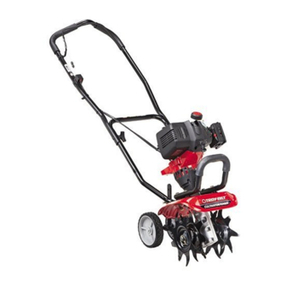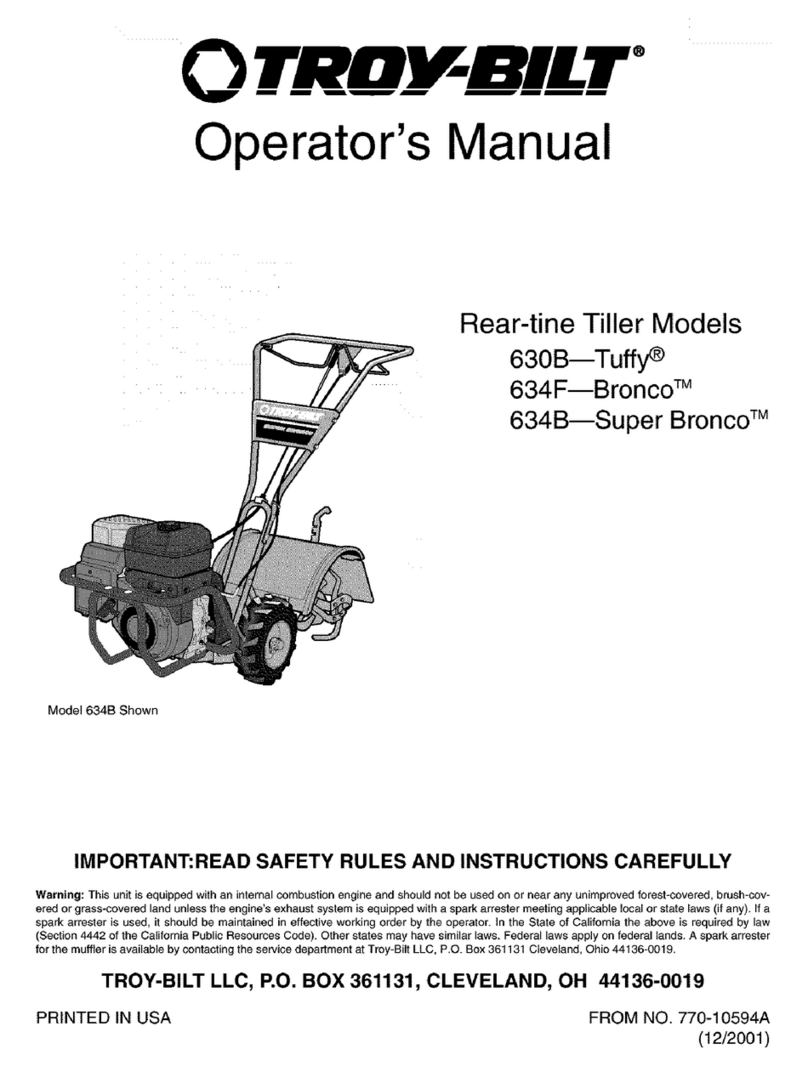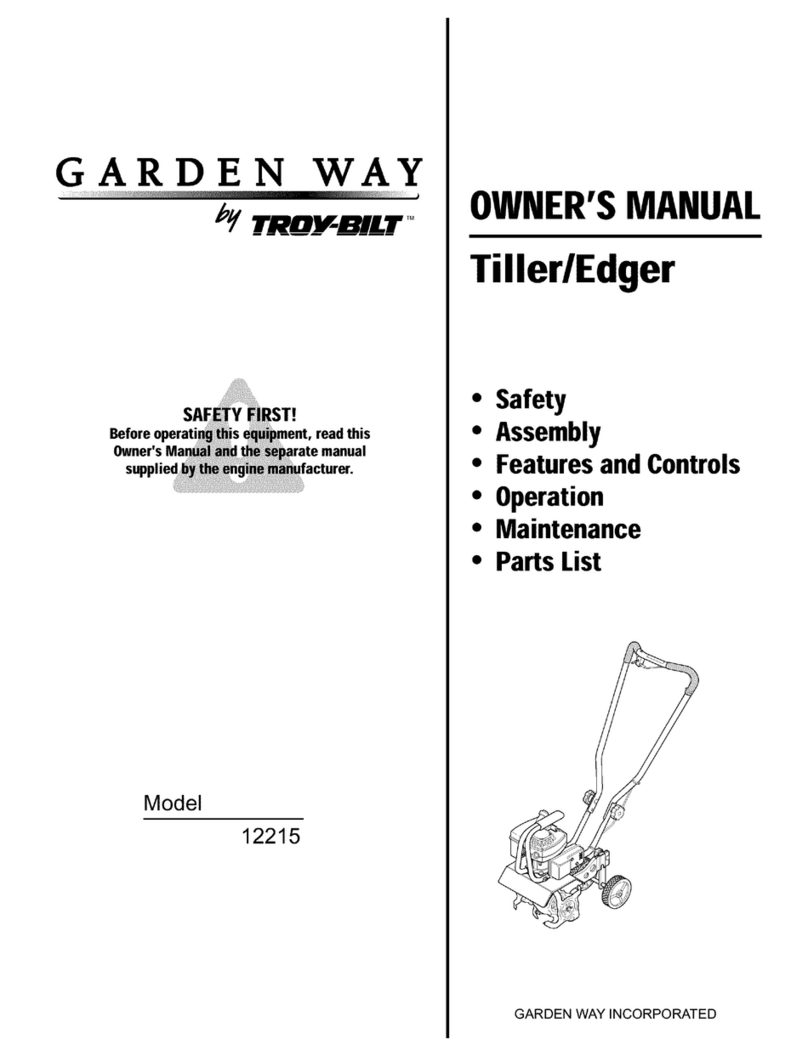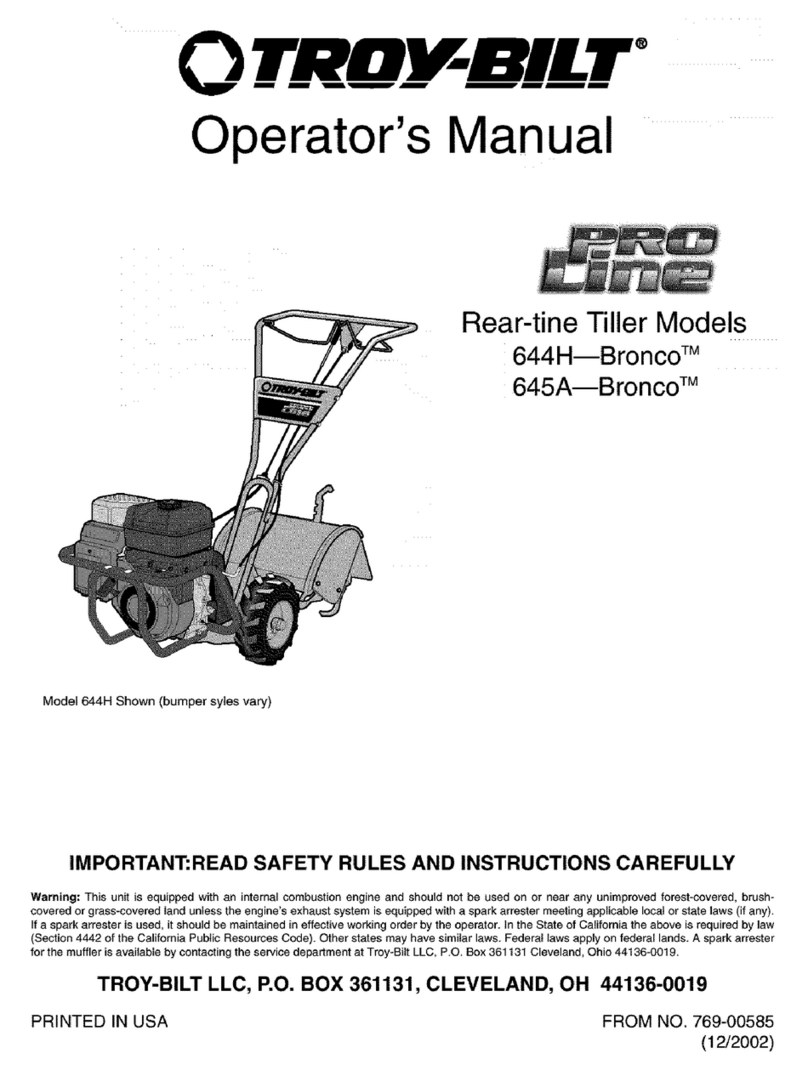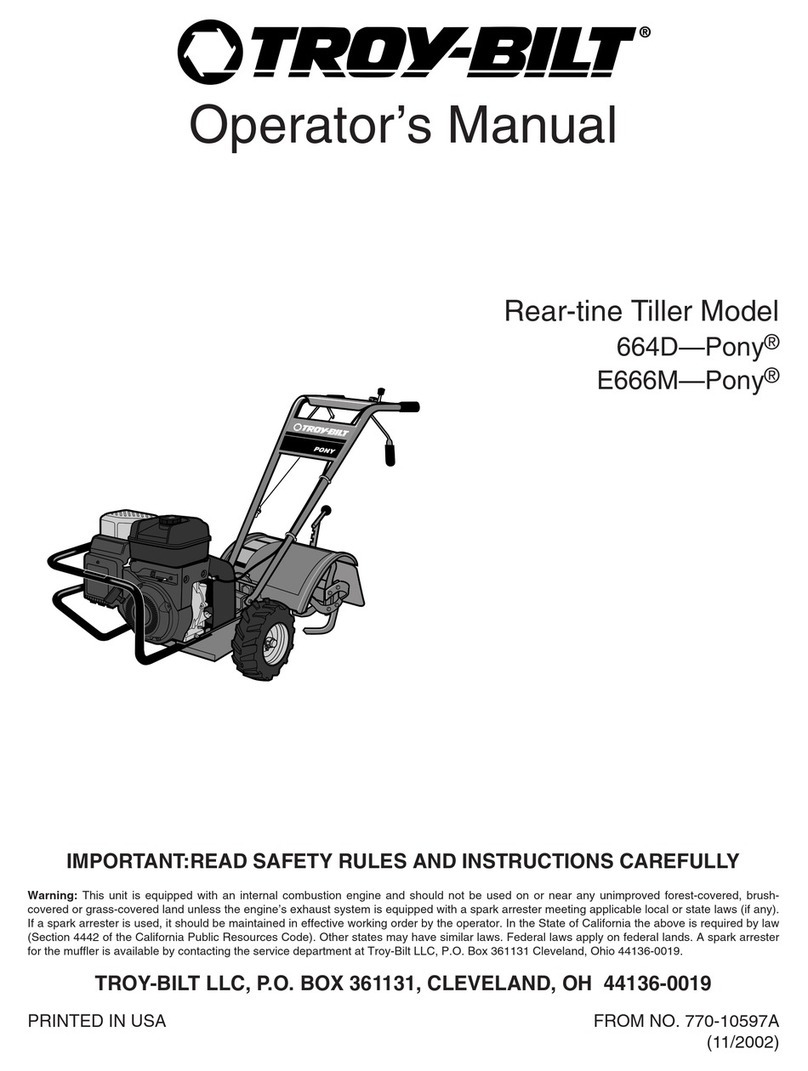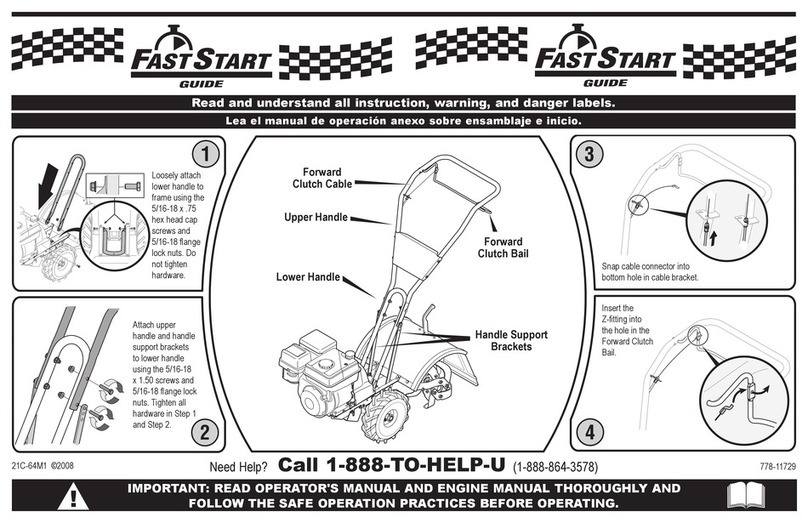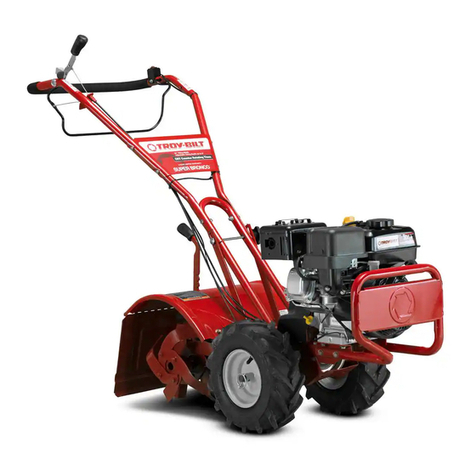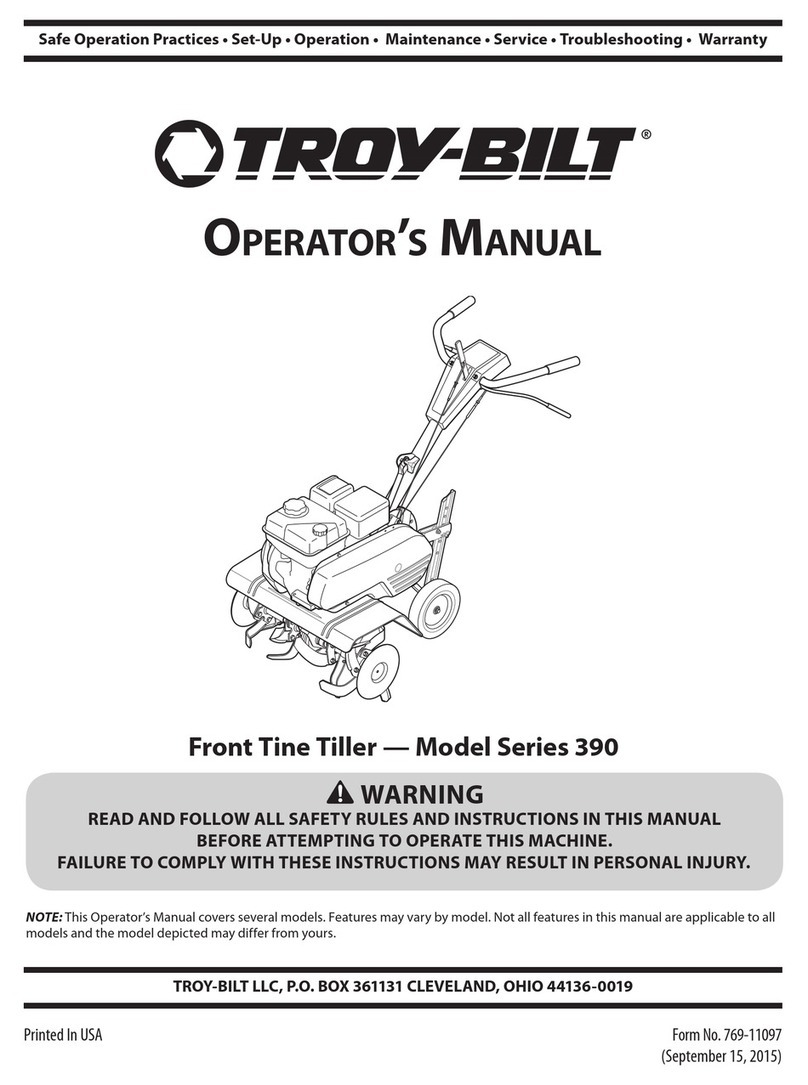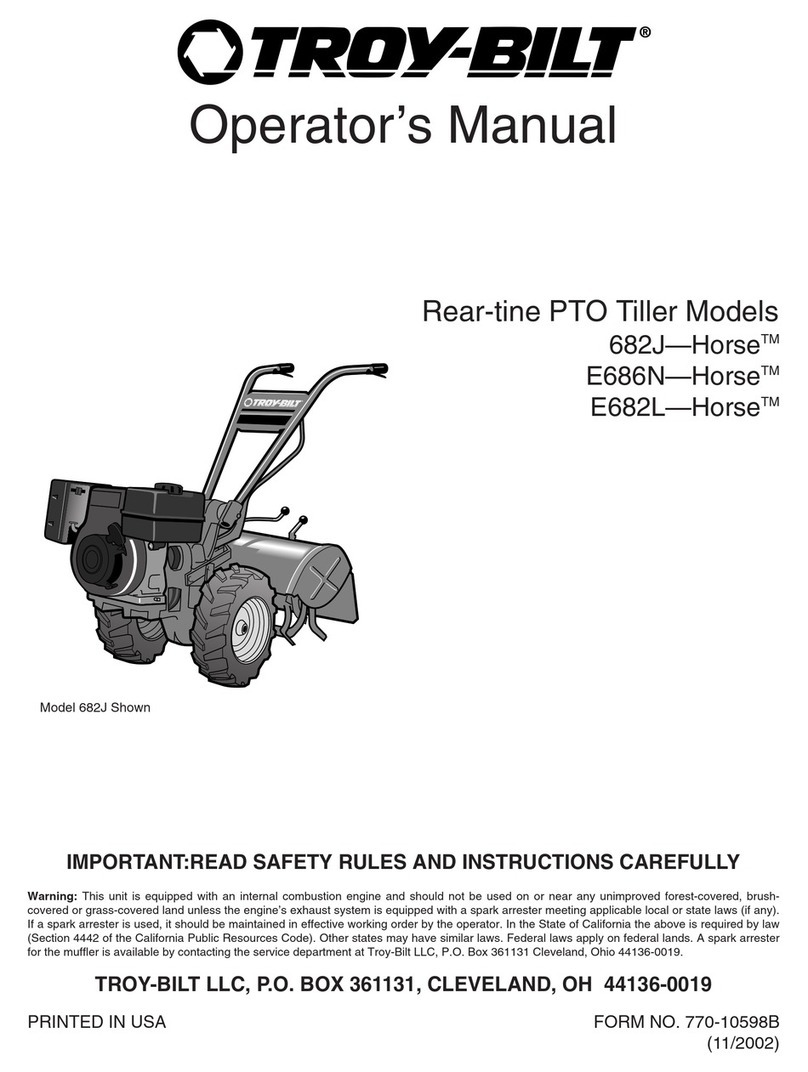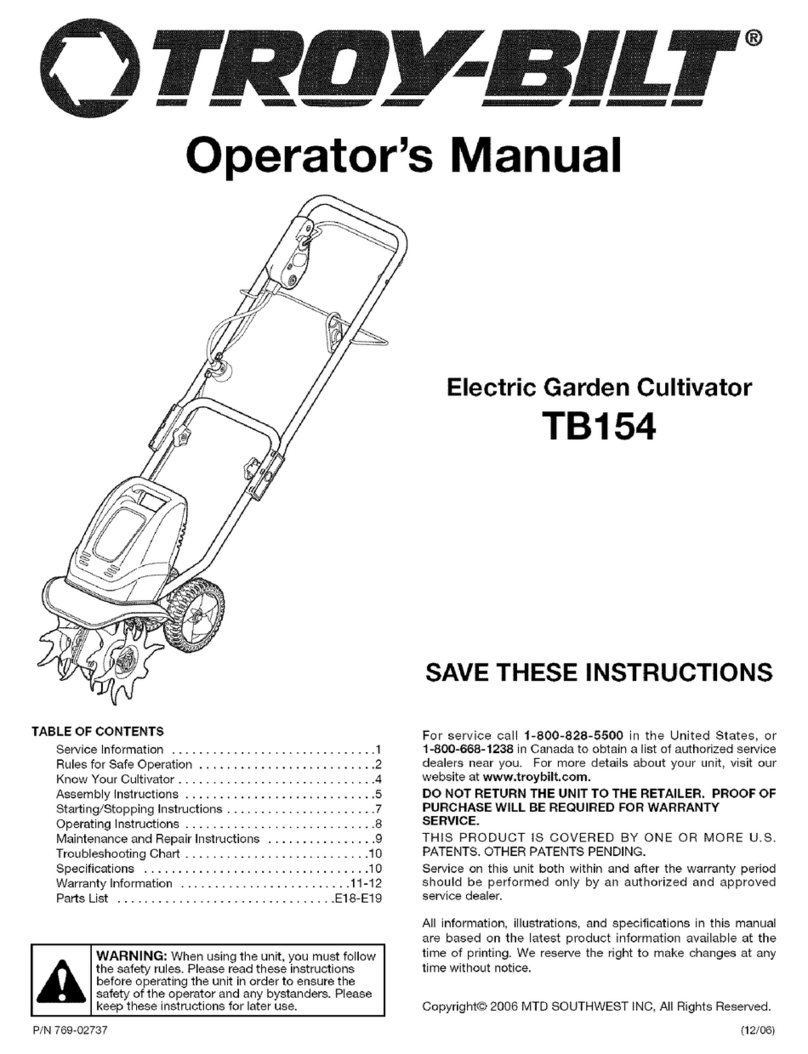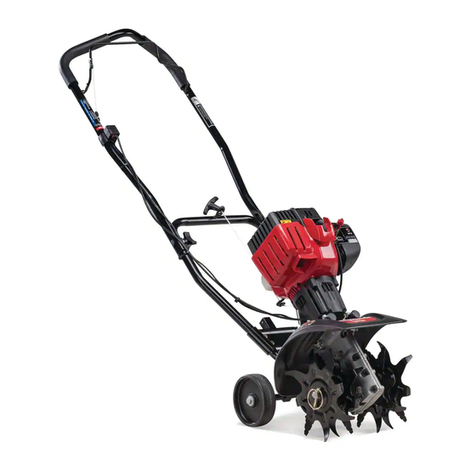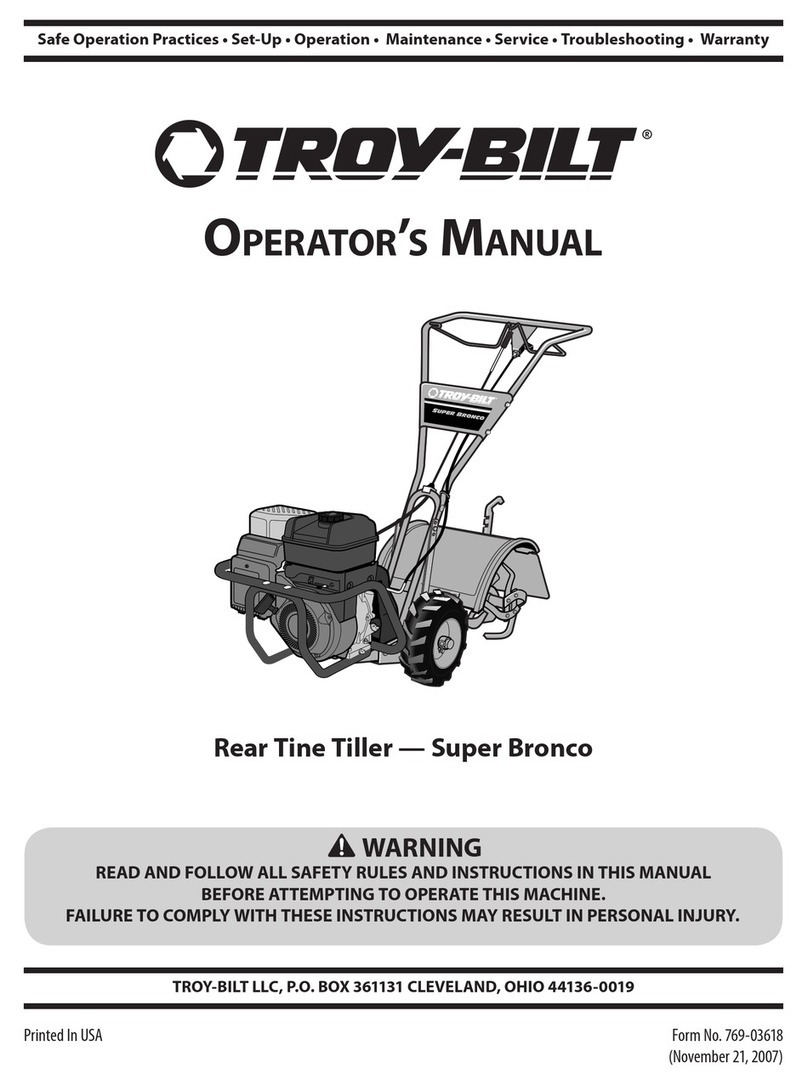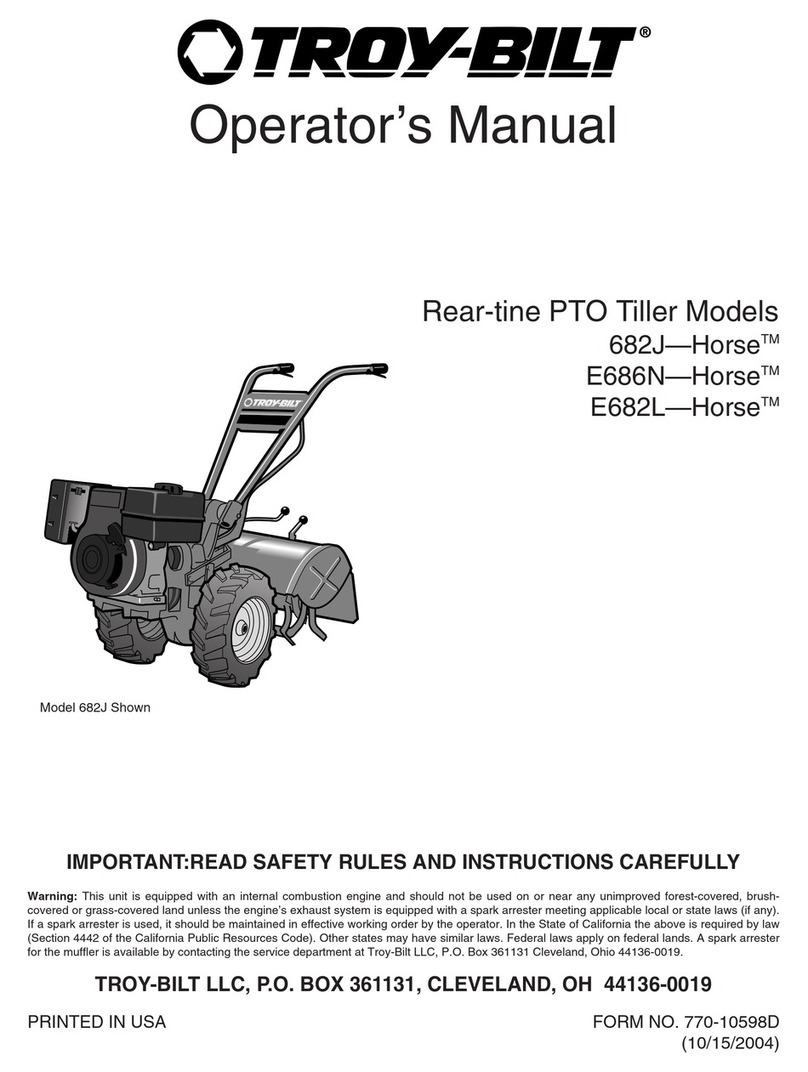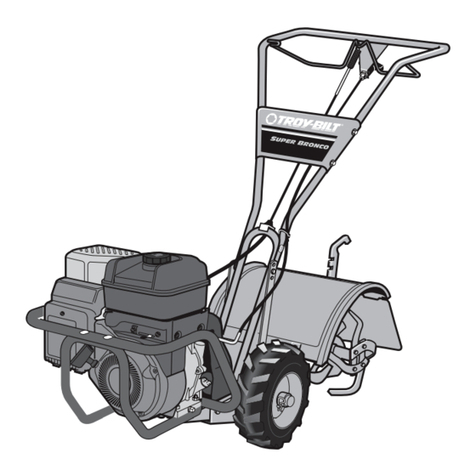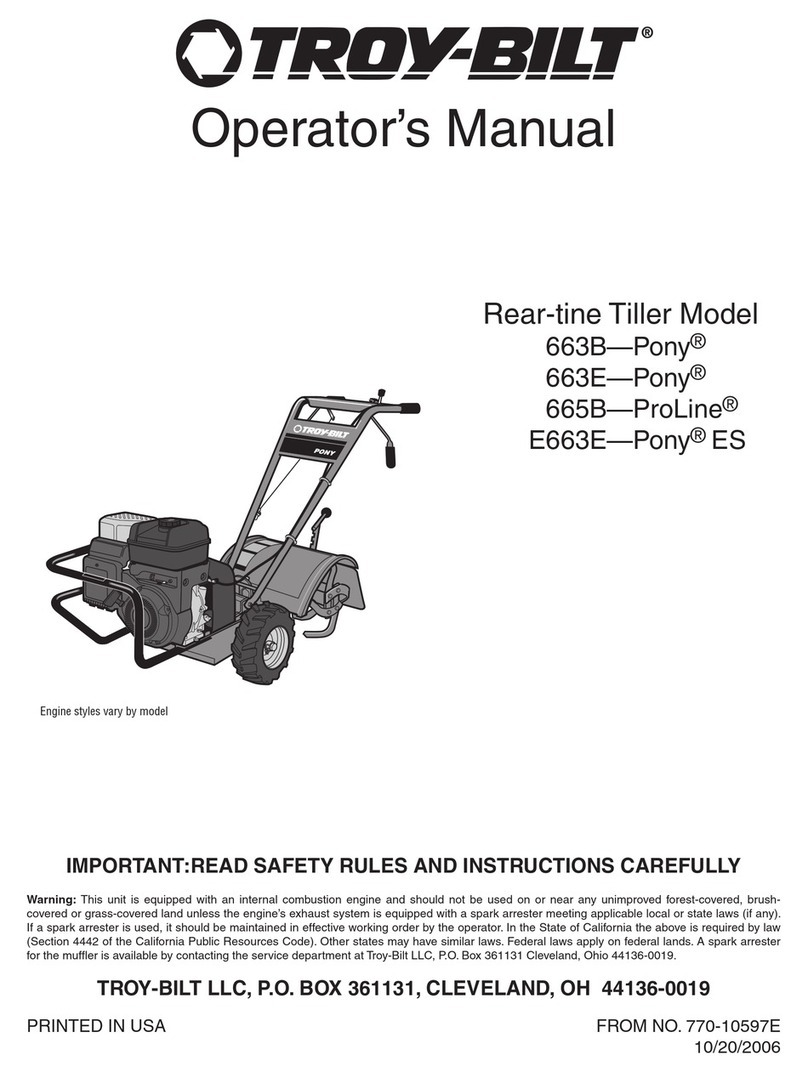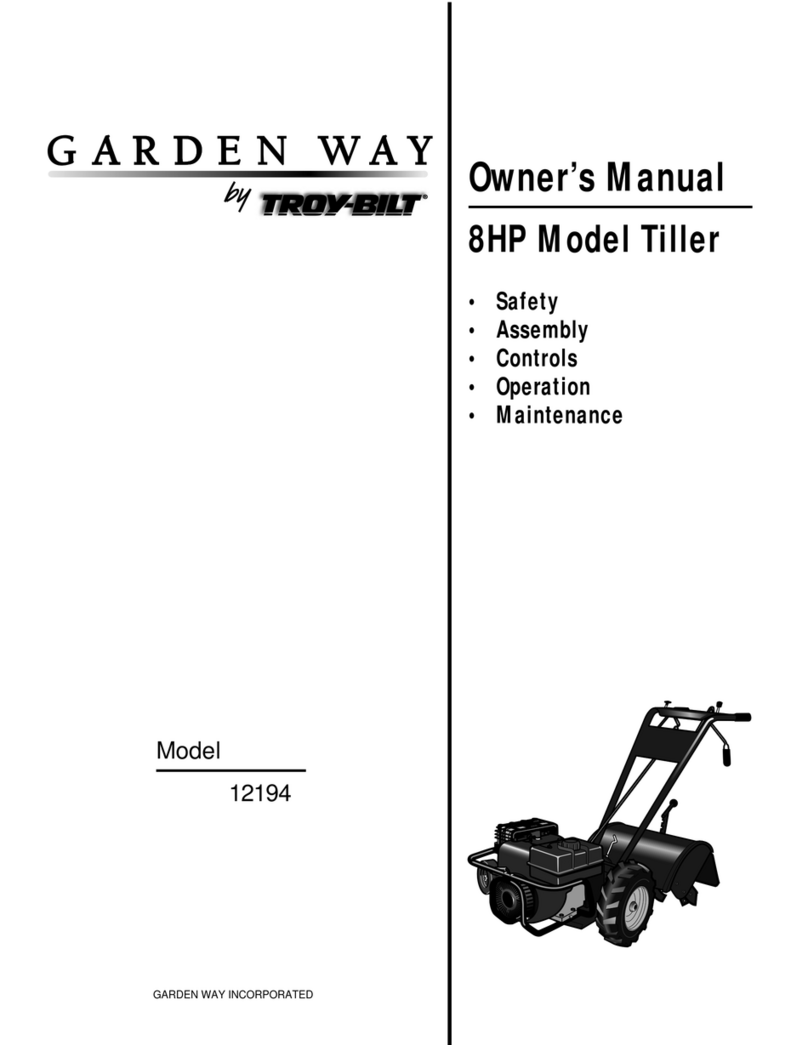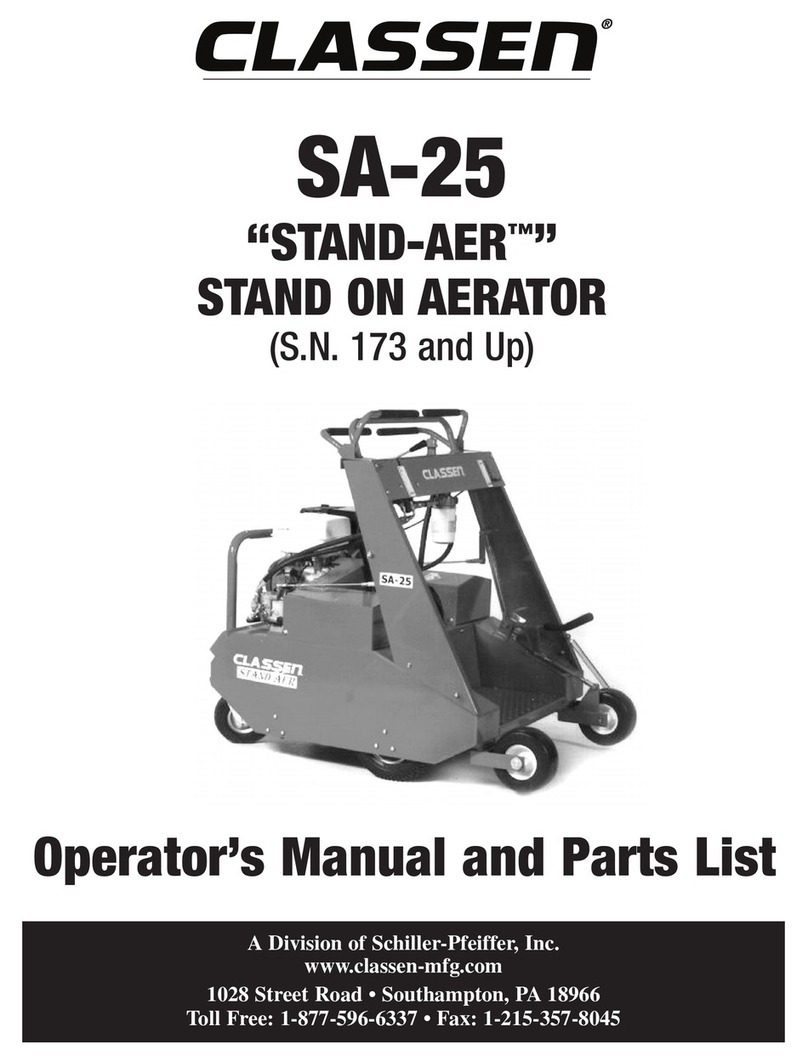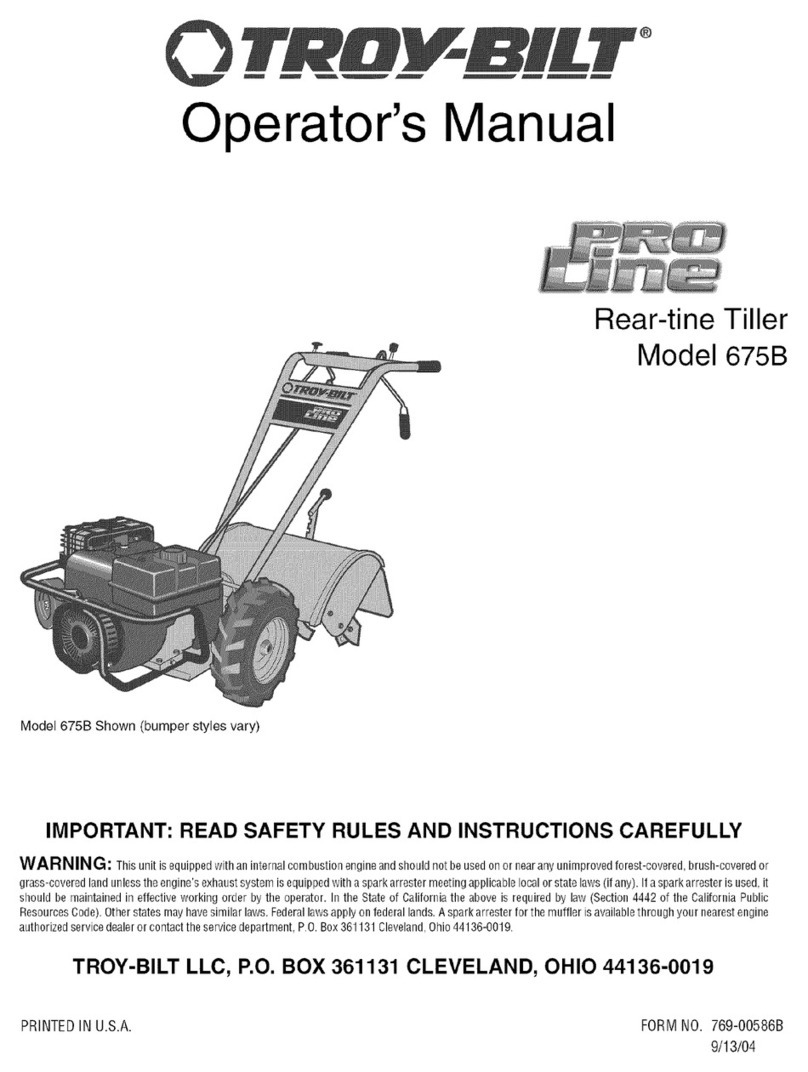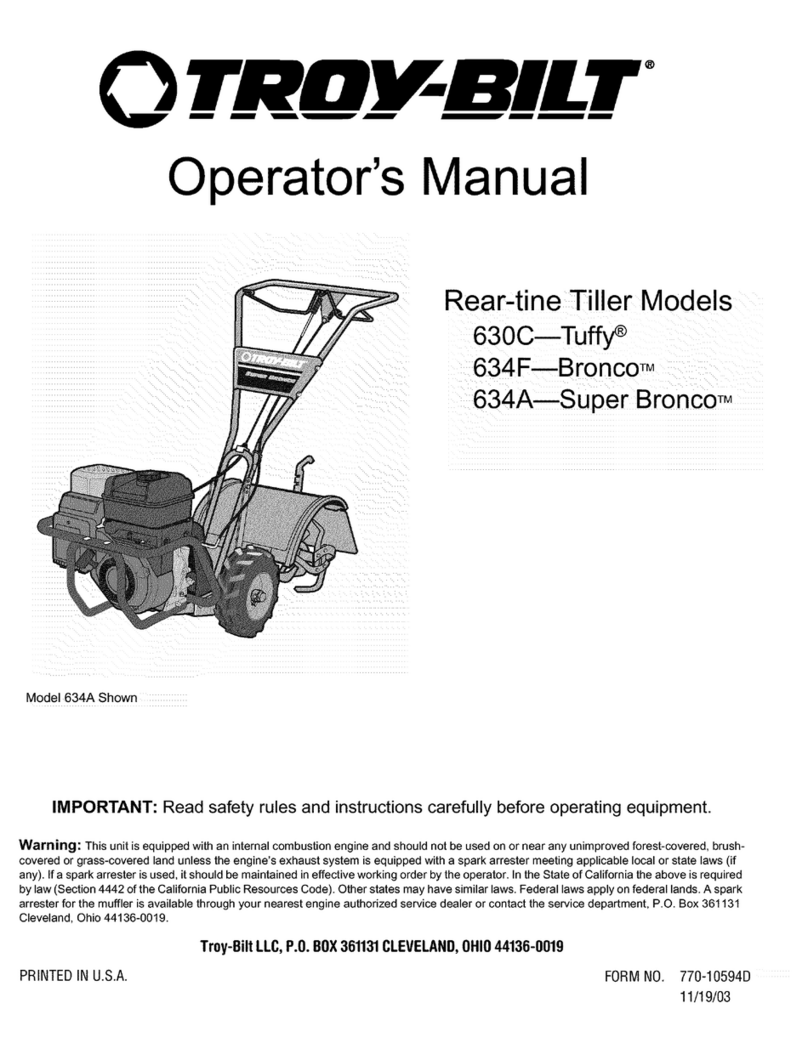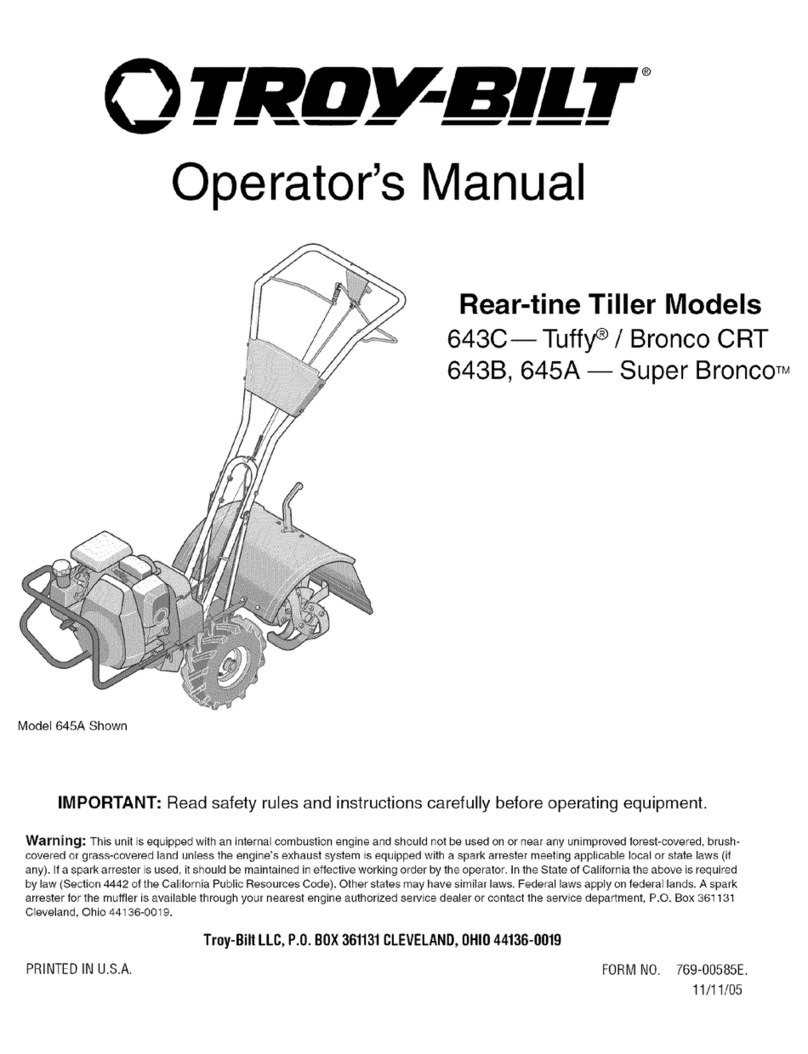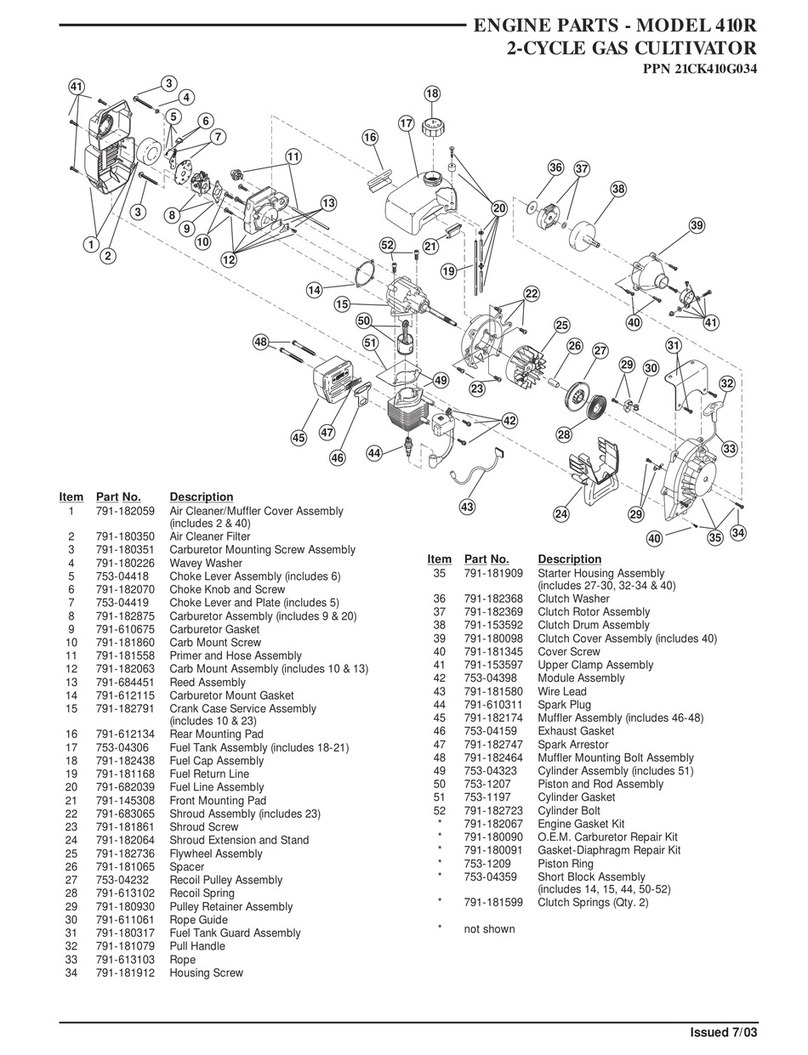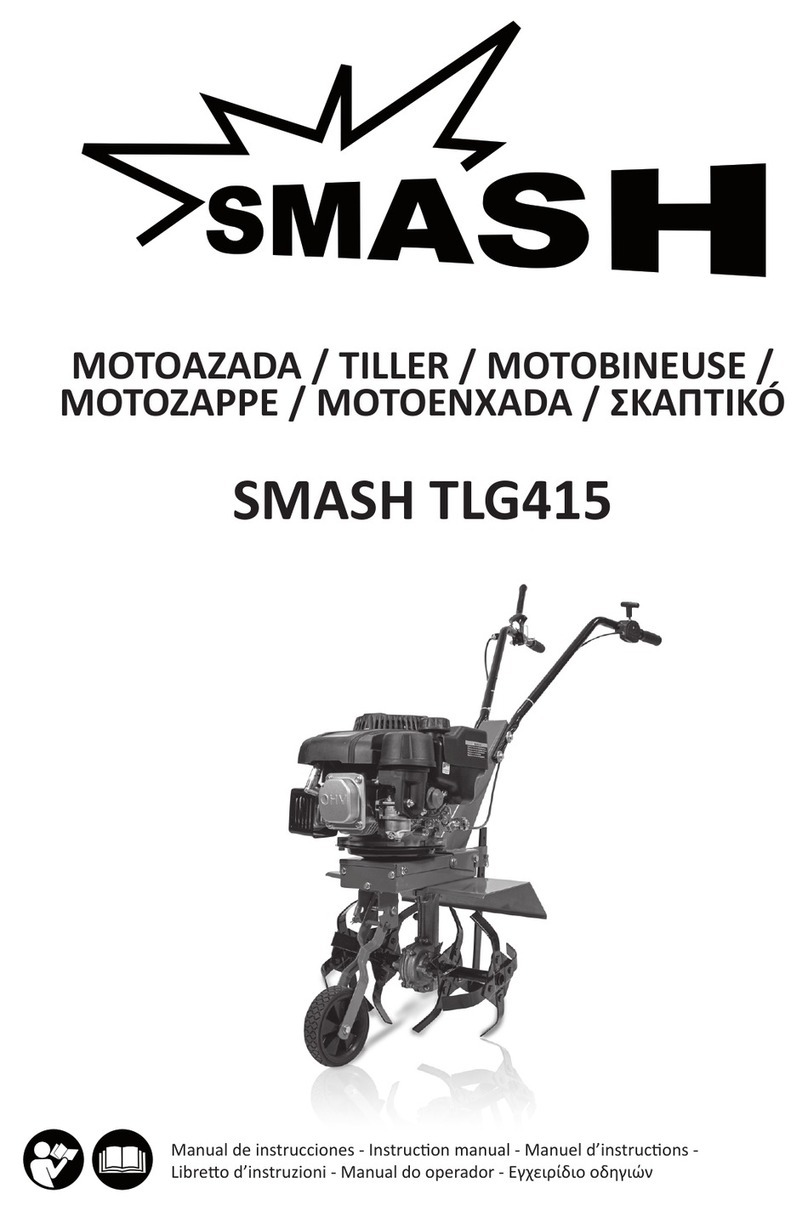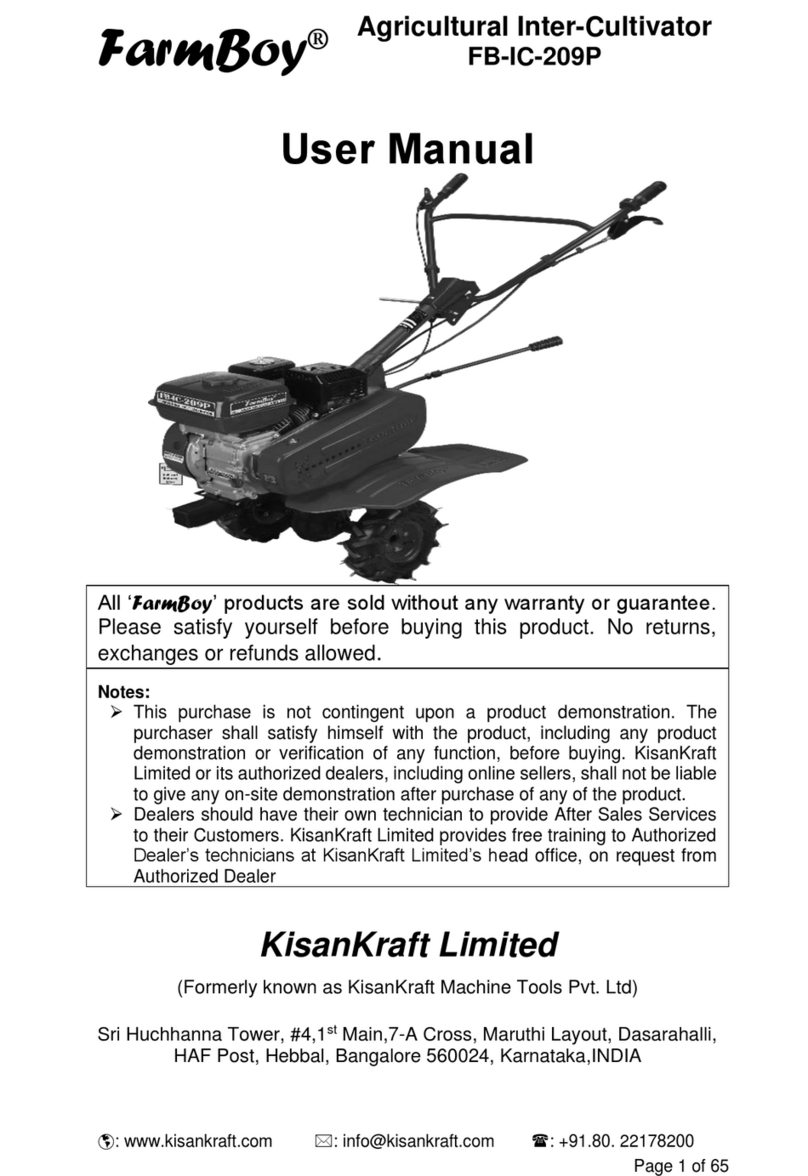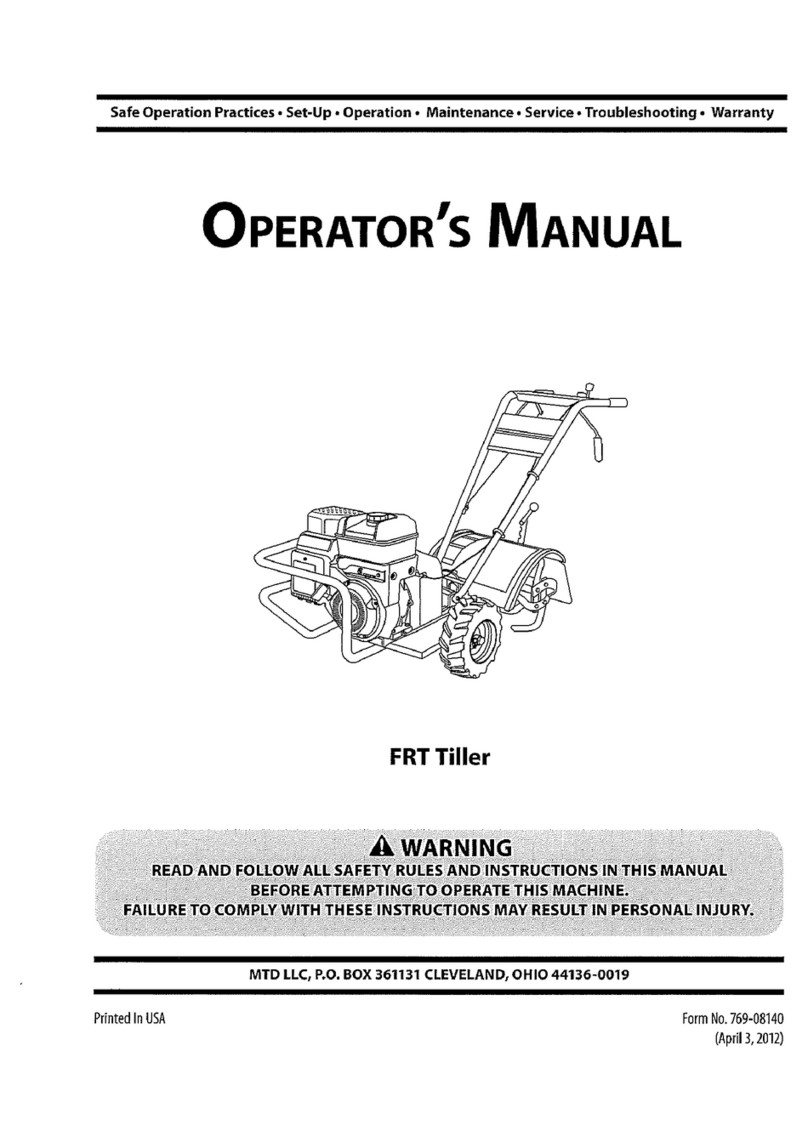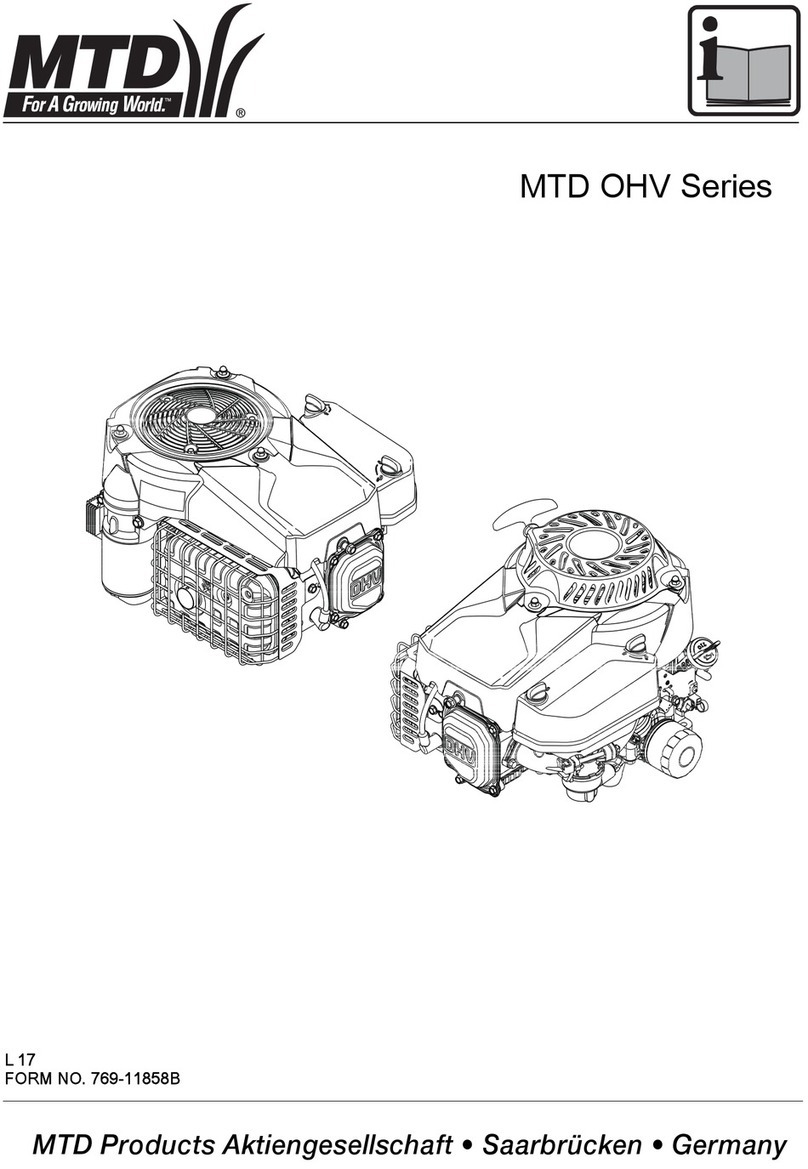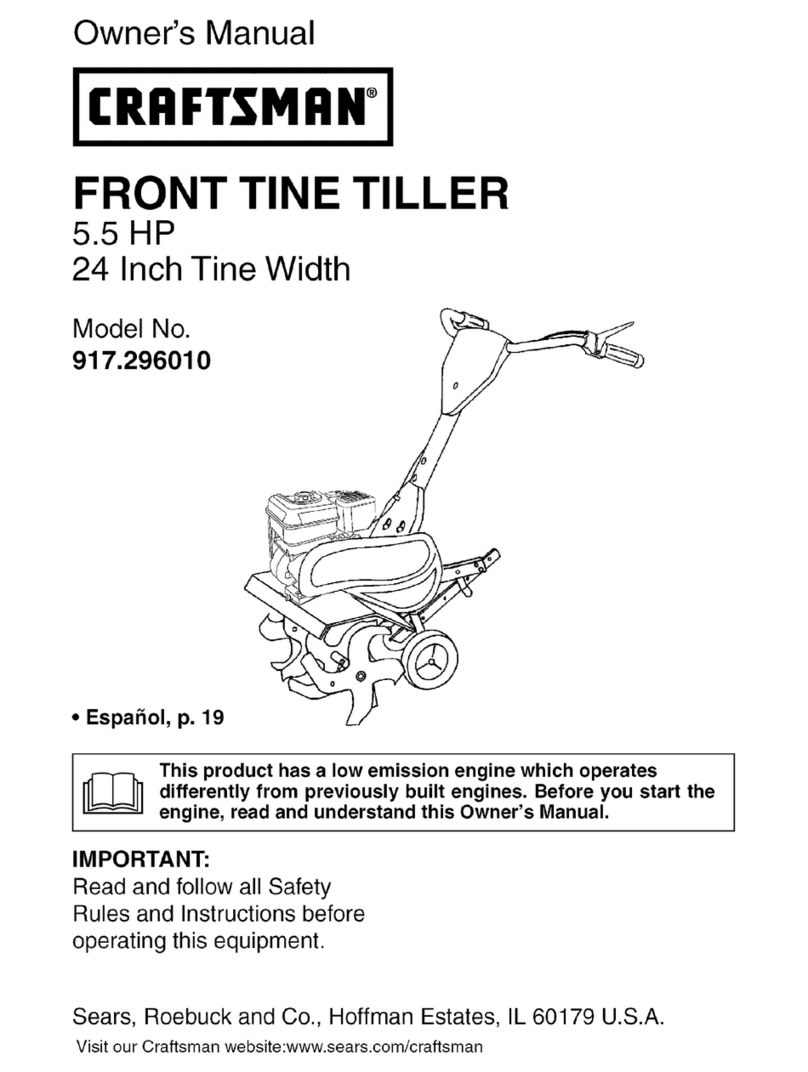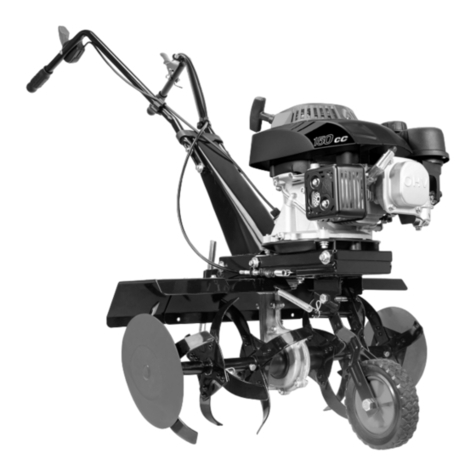7. Takeall possible precautionswhen
leavingthe machineunattended.Stopthe
engine. Removeignition key on electric
start models. Disconnectspark plug wire
and move it awayfrom the spark plug.
MoveWheelGear Leverto ENGAGE.
8. Beforecleaning, repairing, or inspect-
ing,stop the engine,remove the ignition
keyon electric start models,and make
certain all moving parts havestopped.
Disconnectthe spark plug wire and
preventit from touching the spark plug to
preventaccidentalstarting. Onelectric
start models,always removethe cable
from the negativeside (-) of the battery.
9. Always keepthetiller tine hood flap
down, unless using the hiller/furrower
attachment.
10. Never usethe tiller unless proper
guards, plates,or othersafetyprotective
devicesarein place.
11. Do not run engine in an enclosed
area.Engineexhaustcontains carbon
monoxide gas,a deadly poisonthat is
odorless, colorless, and tasteless.
12. Keepchildren and pets away.
13. Never operatethetiller under
engine powerif theWheel GearLeveris
in DISENGAGE(FREEWHEEL).In this
position,the wheelswill notholdthe
tiller backand therevolvingtines could
propelthe tiller rapidly, possibly
causinglossofcontrol.Always movethe
WheelGearLeverto ENGAGEbefore
starting the engine or engagingthe
tines/wheelswith the ForwardClutch
Control or the ReverseClutch Control.
14. Beawarethatthe tiller may unex-
pectedlybounceupwardorjump
forwardif thetinesshouldstrike
extremelyhardpackedsoil, frozen
ground,or buriedobstacleslike large
stones,roots,or stumps.If in doubt
aboutthetilling conditions,alwaysuse
thefollowingoperatingprecautionsto
assistyou in maintainingcontrolofthe
tiller:
a. Walk behindandto oneside ofthe
tiller, usingone handonthe han-
dlebars. Relaxyourarm, butusea
securehandgrip.
b. Useshallowerdepthregulatorset-
tings, workinggraduallydeeper
with eachpass.
c. Useslowerenginespeeds.
d. Clearthe tilling area ofall large
stones,rootsand otherdebris.
e. Avoidusingdownwardpressure
on handlebars.If needbe, use
slightupwardpressureto keepthe
tines from diggingtoo deeply.
f. Beforecontactinghardpackedsoil
at the endofa row, reduceengine
speedand lift handlebarsto raise
tines out ofthesoil.
g. In an emergency,stoptinesand
wheels byreleasingwhichever
ClutchLever isengaged.Donot
attemptto restrainthetiller.
15. Do not overloadthetiller's capacity
by attempting to till too deeplyattoo fast
a rate.
16. Neveroperatethetiller at high trans-
port speeds on hard or slippery surfaces.
Look behind and usecare when backing
up.
17. Do not operatethe tiller on a slope
that istoo steepfor safety.When on
slopes,slow down and makesureyou
havegood footing. Never permit the tiller
to freewheel down slopes.
18. Neverallow bystanders nearthe unit.
19. Onlyuseattachments and acces-
sories that areapproved bythe tiller
manufacturer.
20. Usetiller attachments and acces-
sories when recommended.
21. Neveroperatethetiller without good
visibility or light.
22. Neveroperatethetiller ifyouaretired,
or undertheinfluenceof alcohol,drugsor
medication.
23. Operatorsshallnottamperwith the
engine-governorsettingsonthe machine;
the governorcontrolsthemaximumsafe
operatingspeedto protecttheengineand
all movingpartsfrom damagecausedby
overspeed.Authorizedserviceshallbe
soughtif a problemexists.
24. Donottouch enginepartswhich may
be hotfrom operation.Letpartscool down
sufficiently.
25. Thebatteryon electricstartmodeltillers
containssulfuricacid.Avoidcontactwith
skin,eyes,or clothing.Keepoutof the
reachofchildren.
Antidote-External Contact:Flushimme-
diatelywith lotsof water.
Antidote-Internal: Drinklargequantities
ofwateror milk.Followwith milk of
magnesia,beateneggs or vegetableoil.
Calla doctor immediately.
Antidote-EyeContact:Flushwith water
for 15 minutes.Getpromptmedical
attention.
26. Batteriesproduceexplosivegases.Keep
sparks,flame,andsmoking materialsaway.
Ventilatewhenchargingbatteriesor when
usinga batteryinanenclosedspace.
ALWAYSwearsafetygoggleswhen
working nearbatteries.
27. Pleaseremember:Youcanalwaysstop
thetines andwheelsby releasingthe
ForwardClutchControlLeverorthe
ReverseClutchControlknob(whichever
control you haveengaged),or by moving
the EngineThrottleControlLever(located
onengine)to STOPon recoilstartmodels
or byturningthe ignitionkeyto OFFon
electricstartmodels.
28. To loador unloadthetiller, seethe
instructionsinSection4 ofthis Manual.
29. Useextremecautionwhenreversingor
pullingthemachinetowardsyou.
30. Starttheenginecarefullyaccordingto
instructionsandwith feetwellawayfrom
thetines.
31. Neverpick up or carrya machinewhile
theengineis running.
MAINTENANCEANDSTORAGE
1. Keepthe tiller, attachments and acces-
sories in safe working condition.
2. Checkall nuts, bolts, and screws at
frequent intervalsfor proper tightness to
besure the equipment is in safeworking
condition.
3. Neverstorethetillerwith fuel inthefuel
tank insidea buildingwhereignition
sourcesare presentsuchashotwaterand
spaceheaters,furnaces,clothesdryers,
stoves,electricmotors,etc. Allowengineto
cool beforestoring in anyenclosure.
